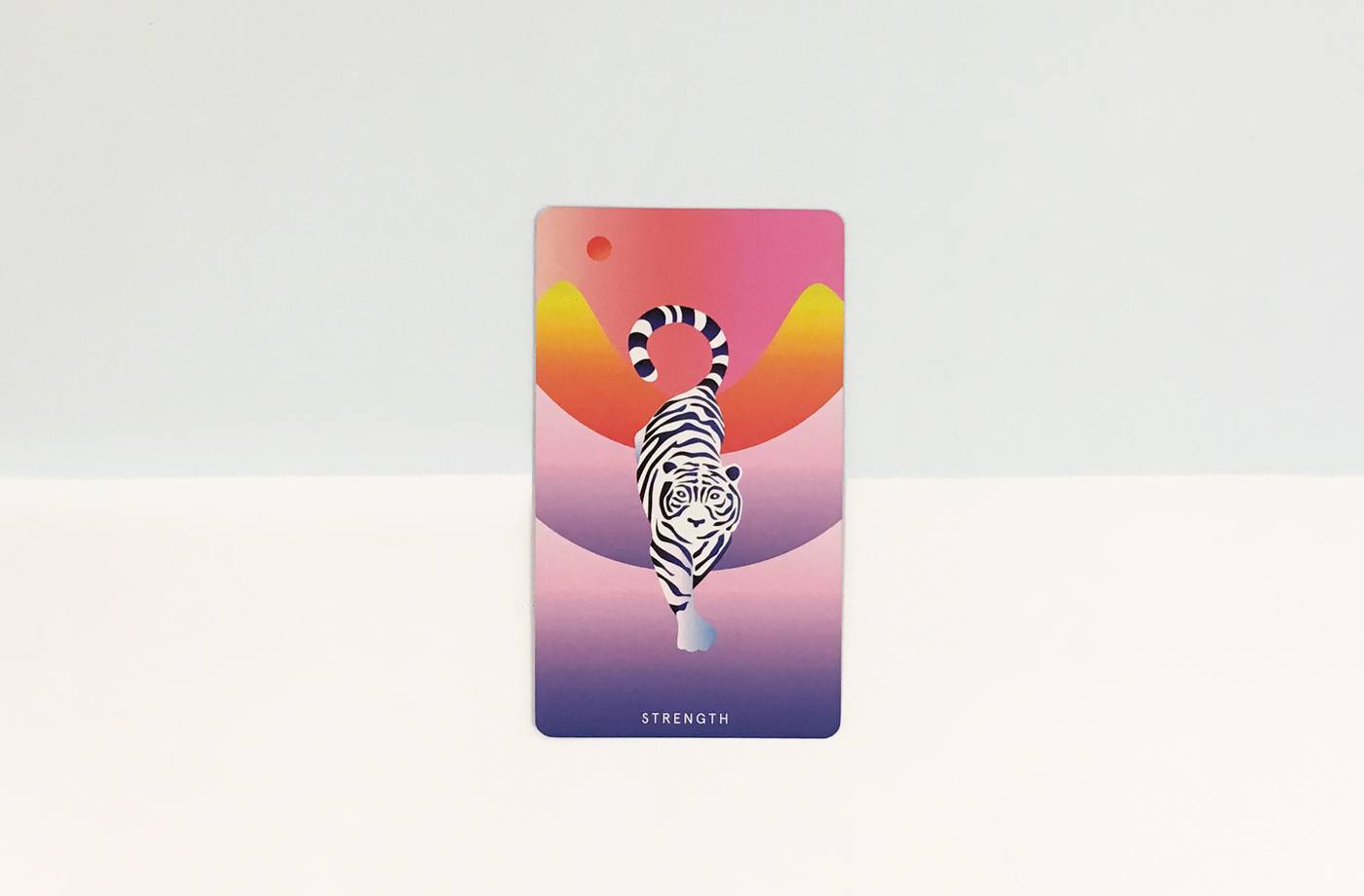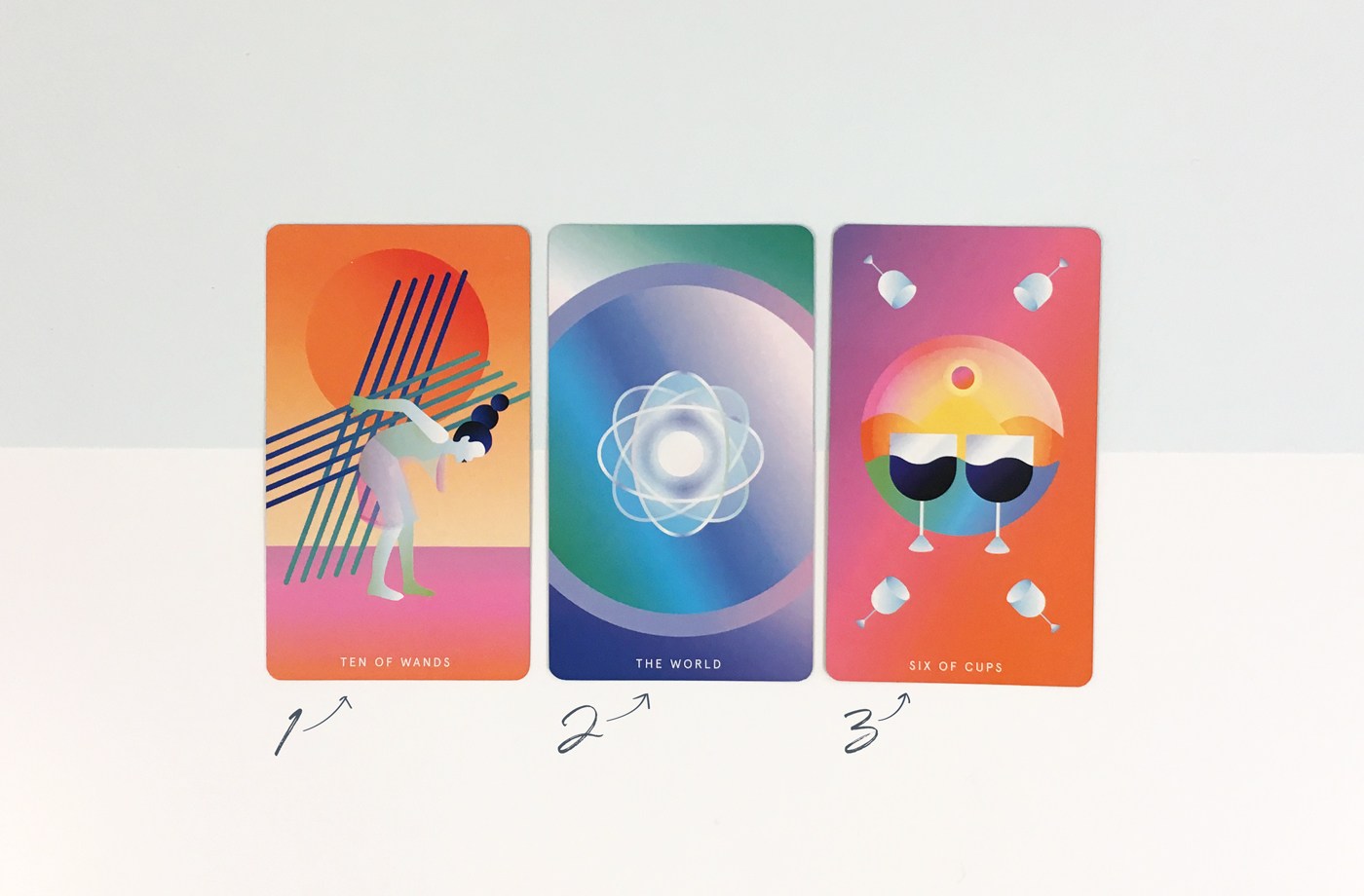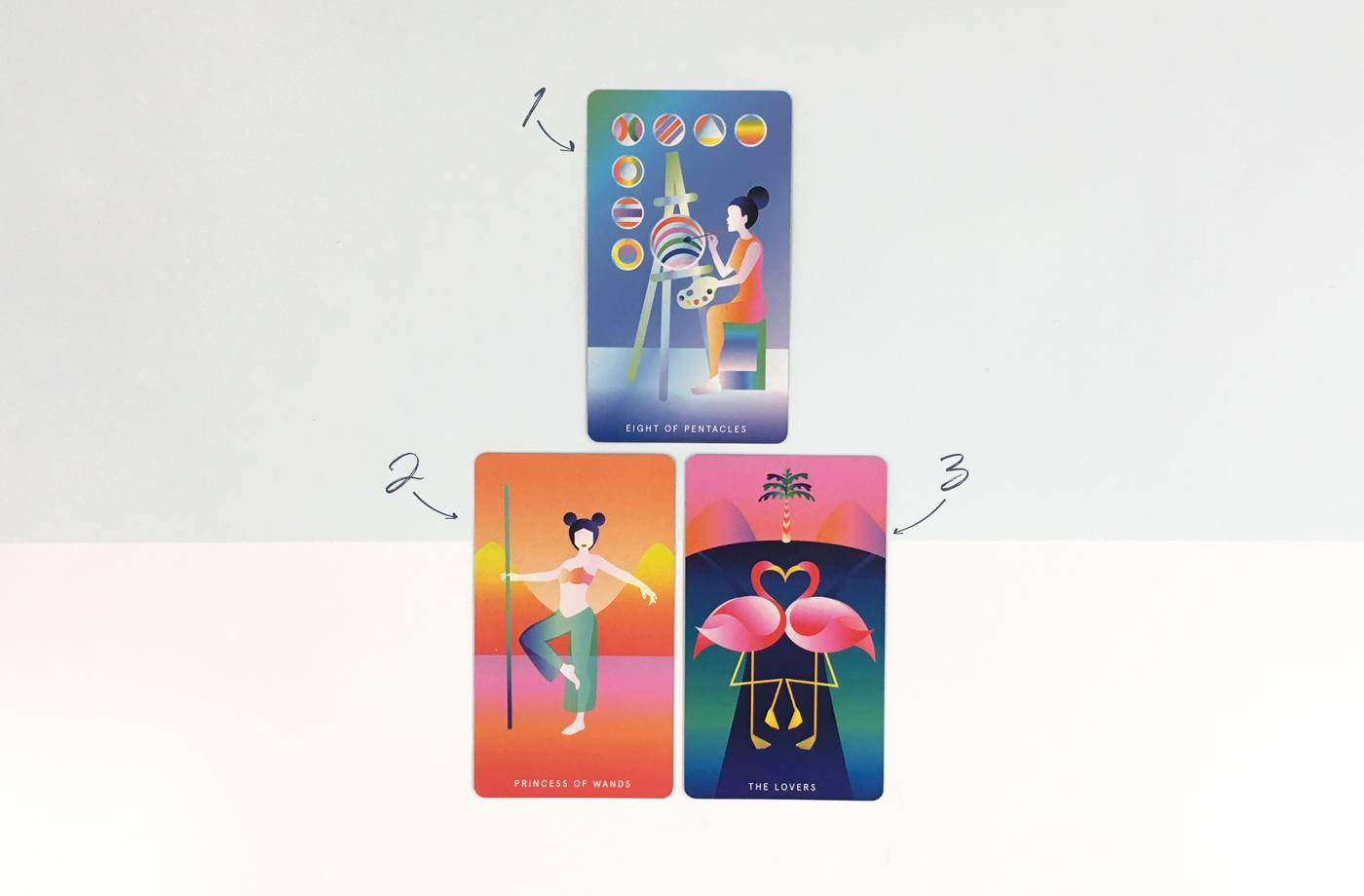Channel Your Inner Woo-Woo With the Ultimate Guide to Tarot Cards—Including How a Tarot Reading Works
Yet according to intuitive tarot counselor Sarah M. Chappell, the cards really don't have to be complicated. In fact, she believes that by keeping your readings as minimal as possible, you're actually better able to interpret the results. "I like to limit things to one to three cards, especially for students who are just beginning," she says. "Keeping things simple and clear makes it easier to actually receive the messages, rather than trying to talk ourselves into the answer we actually want."
And that's the whole point of tarot: By asking a question and pulling a few cards, it's said to give us feedback and guidance in a way that we can't access through our intellect alone. "I like to think about tarot as a conversation—a way for us to talk to ourselves, to the universe, to the unknown," says Chappell. "The cards mirror back our joys, our sorrows, our challenges, and our opportunities for growth." She adds that some tarot readers believe they're tapping into a higher power when they pull and interpret cards, while others consider them a portal to access their own subconscious knowing.
"I like to limit things to one to three cards. Keeping things simple and clear makes it easier to actually receive the messages, rather than trying to talk ourselves into the answer we actually want." —Sarah M Chappell, tarot counselor
As someone who's totally fascinated (and a little bit intimidated) by tarot, I asked Chappell to break down the steps of reading cards in a way that anyone can understand. It's still not quite as simple as sticking amethyst in your bra—but when's the last time your crystal gave you life advice?

{{post.sponsorText}}
Prepare for your tarot reading
1. Get a deck
Many people believe that you need to be given your first tarot deck, but Chappell says that's not true. "You can select one that calls to you", she says. "Buying a deck with art you love is far more important than waiting around for somebody to give you a deck."
Chappell says to look for a tarot deck that's based on the Rider Waite Smith system—that's the one most often used today—but otherwise, just find an aesthetic that resonates. "There are amazing alternatives based on the Rider Waite Smith deck where the artwork is more inclusive, less hierarchical. You can find decks of cats and dogs and unicorns, or decks by artists of color and queer folk," she says. "You just don’t want to pick a card and be like, 'This card scares me,' or 'This looks like something I can't relate to.'"
2. Learn about the cards
In the beginning, you'll likely spend a lot of time researching the meanings of all the cards you pull—and that's totally okay. Chappell has her own free e-book that provides keywords for each card, and she also recommends visiting the websites Little Red Tarot and Biddy Tarot for in-depth interpretations.
"People think memorization isn’t magical, and if they’re really intuitive, the cards will just speak to them. But that’s not true." —Chappell
Making flashcards for each card and studying them like you would for a quiz is also an option. Okay, so it might bring back bad middle-school memories, but Chappell swears the method will help you get more out of your readings. "People think memorization isn’t magical, and if they’re really intuitive, the cards will just speak to them. But that’s not true," she says. "The confidence we can have in our intuition when we have some base-level memorization of the cards completely transforms your practice." Fluorescent highlighters optional.
3. Tell fear to get lost
If you've ever tried to read your own cards for fun and pulled, say, the Death card, you'll know that tarot readings can turn dark really quickly. But Chappell says all the cards are simply metaphors, and there's no such thing as a "bad" one. "When we’re learning tarot, especially when we’re reading for ourselves, we have the tendency to see the worst possible meaning for any card that shows up," she says. "But it's about choosing to see those things as challenges we get to work through and grow from rather than bad energy that’s going to haunt us."
So if you do happen to pull the Death card, don't interpret it as the Grim Reaper orbiting you. Rather, consider what you need to let go of (or "die," if you will) in your life to make room for something better.
Now that you're set with a deck, check out out 4 sample spreads for tarot newbies

1. A pull to set your intention for the day
Question to ask: What do I most need to know today?
Nope, you don't need to lay out an elaborate spread of cards on your floor to get valuable insight. Chappell likes to start her morning by pulling just one card to help focus her energy for the day ahead. "It can be so helpful, especially if you're about to have a busy day and don’t have time for a full meditation, journaling, and asana situation," she says. "Pulling a card can be a nice way to check in with yourself and be sure you’re setting yourself up for whatever’s coming your way."
Another question you can ask: "Where in my life should I ask for help?" Chappell says this one is helpful if you're feeling especially overwhelmed. "I find that a lot of folks go to the cards because they need help, but they forget that there are other places in their life to get support." You might find that the cards point to a specific project or relationship, which can make it easier to move ahead with purpose.

2. A spread to quiet an anxious mind
Question to ask, Card 1: What does my mind think is going on?
Question to ask, Card 2: What is the reality of this situation?
Question to ask, Card 3: What, if anything, should I do about it?
"A perfect time to read tarot is when we're worked up and can't see clearly," says Chappell. That's why she's a big fan of this spread—it can help to distinguish your perception of a situation from what's really happening. "We can honor how we’re experiencing something, but also peer through the baggage we’re bringing to a situation and see what’s going on," she says. (Anyone else in a maddeningly undefined non-relationship nodding their head in agreement right now?)
It can also help you decide what to do next. "Sometimes we need to do something, and sometimes we don’t," says Chappell. "This card can help us figure out if we need to do anything about the situation at hand or just let it ride for a bit."

3. A spread to help you make a decision
Question to ask, Card 1: What do I want?
Question to ask, Card 2: What do I need?
Question to ask, Card 3: How do I integrate my desires and my needs?
Let's say that you're seriously coveting Dyson's new $500 "curling iron," but you also like the idea of eating something other than ramen noodles this month. This spread can help you decide whether that hot tool is really going to be worth it for you, says Chappell. "It can separate out what we want from what we need," she explains. "The third card laid on the top is like a bridge between them. Is there a path forward that can support both sides, wants and needs?"
You may find, for example, that you actually need to treat yourself after a long busy stretch at work—but that it would be wise do so responsibly, without blowing your entire grocery budget. (A few new matte lipsticks, perhaps?)

4. A spread to find guidance in tough times
Question to ask, Card 1: What choice got me here?
Question to ask, Card 2: What needs to shift to get me to the desired outcome?
Question to ask, Card 3: How do I support myself to create that shift?
"This is a great spread when we find ourselves in a situation we don't want to be in," says Chappell. For instance, if you were fired from your job, the first card would theoretically clarify how you played a role, so you know how not to repeat the pattern. (Like maybe it would show a struggle with communication or a tendency toward insecurity.) The second and third cards can help you see what you should do next by "looking at what shift is necessary and how you can make it happen."
In all of the spreads above, Chappell recommends singling out the action cards that really resonate with you, journaling about them, and keeping them somewhere you can see them often. "You could put it on your altar or on your dresser or in the bathroom," she says. "Just somewhere where you’ll see it and remind yourself 'I’m supposed to be working on this card, this energy, this medicine.'"
Looks like Gucci's not the only tarot lover that considers decks to be home decor inspo.
Feel like crystals just don't work for you? You might find that a yoni massage is better at getting you into that high-vibe state of mind.
Loading More Posts...